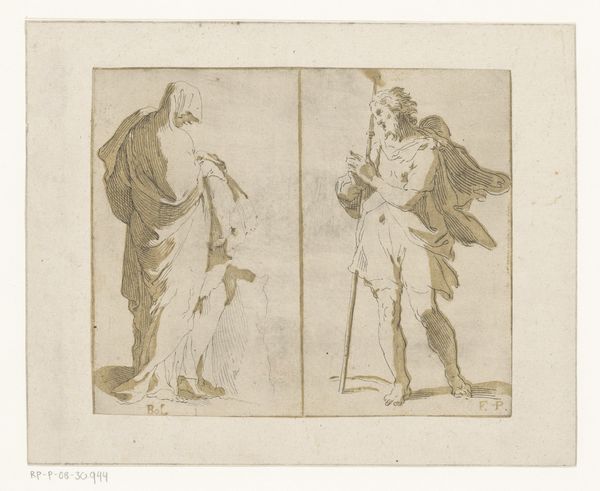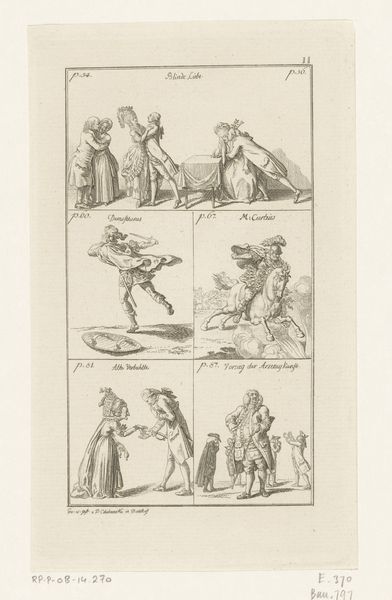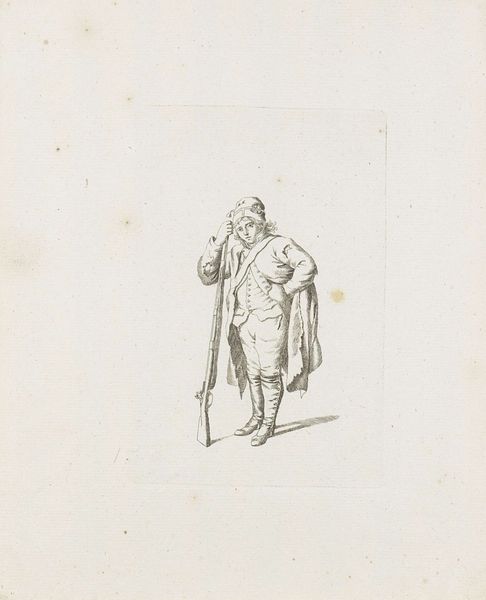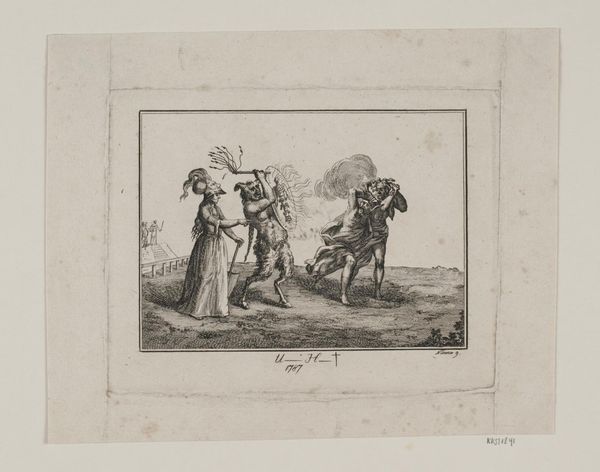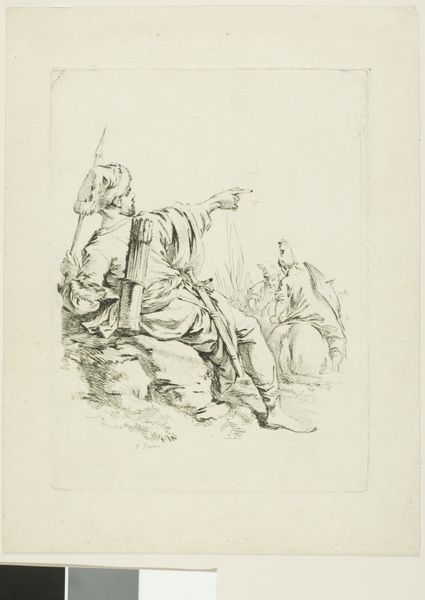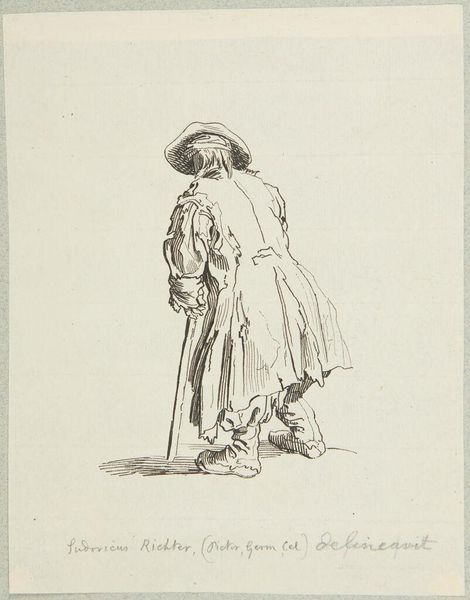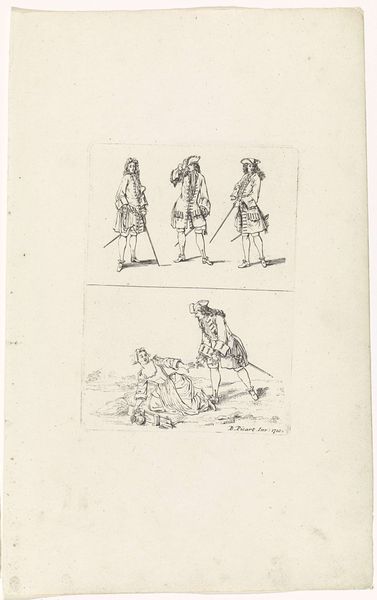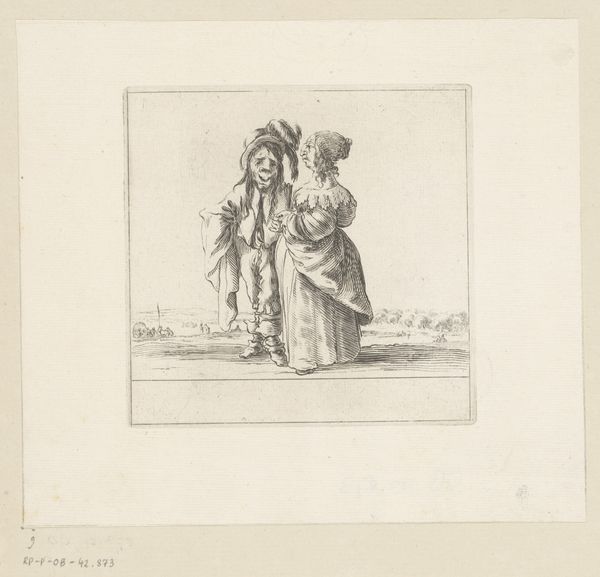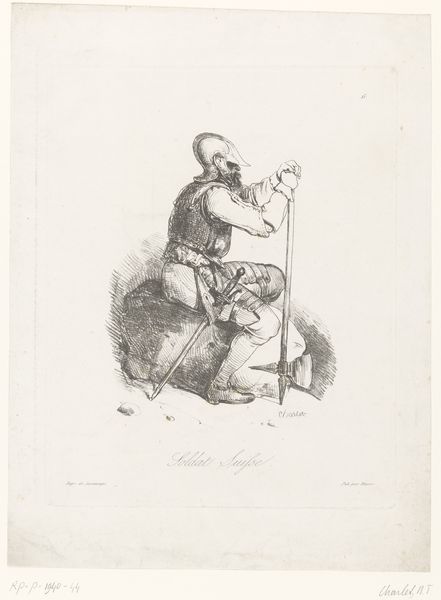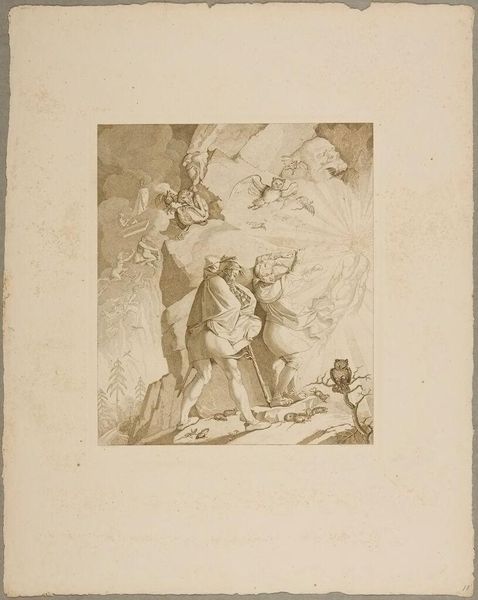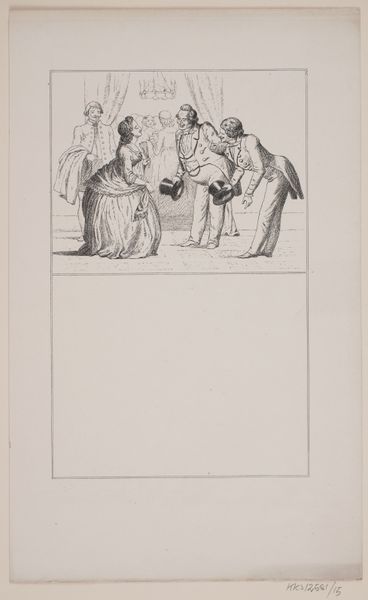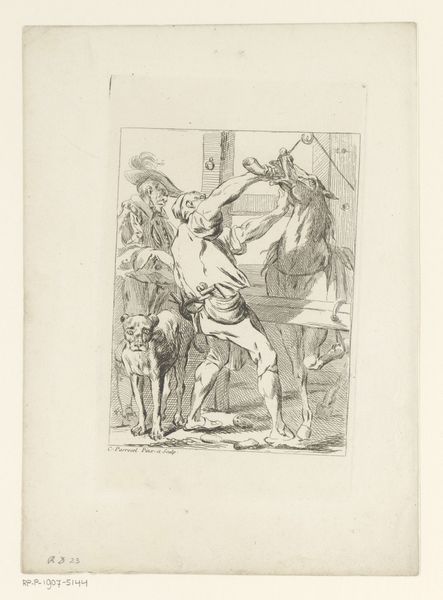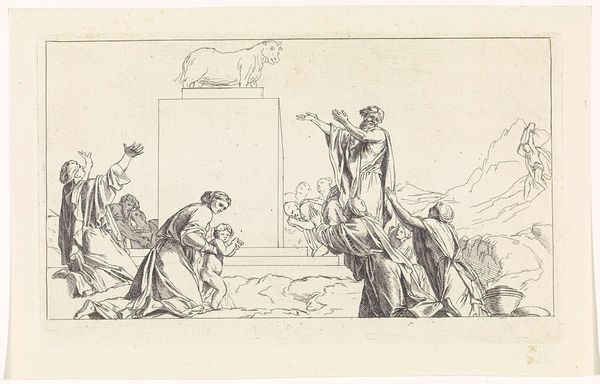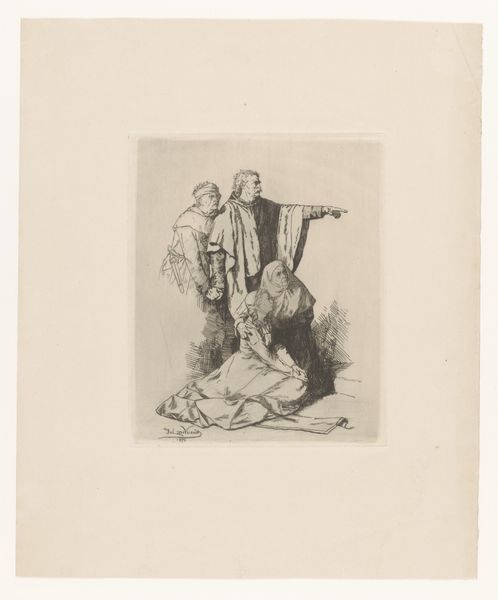
Signora Lucia and Trastullo, and Capitano Spessa Monti and Bagattino, after Callot c. 19th century
0:00
0:00
Copyright: CC0 1.0
Curator: This is Adrian Ludwig Richter's "Signora Lucia and Trastullo, and Capitano Spessa Monti and Bagattino, after Callot," held here at the Harvard Art Museums. Editor: I'm immediately drawn to the figures’ dynamic poses and the stark contrast achieved through line work. It creates a whimsical, almost theatrical feeling. Curator: Precisely! Richter, born in 1803, positioned himself within a lineage, appropriating the celebrated Baroque printmaker Jacques Callot. These characters were tropes of the popular theater. Editor: The composition is intriguing. Two distinct scenes, separated yet connected on the same plane. I wonder if that division is intentional, reflective of their roles? Curator: It’s a commentary on social mores—high and low, perhaps even a little carnivalesque, playing with stock characters familiar to Richter’s 19th-century audience. Editor: The precision of line here is really remarkable. There is a tangible sense of form emerging from such simple marks. Curator: Richter’s technical skill serves a larger cultural purpose; by referencing Callot, he’s engaging in a dialogue with the past, redefining the role of art in a changing world. Editor: I suppose I was initially captivated by the piece’s surface qualities, and you’ve revealed its depth. Curator: And you reminded me of the sheer visual impact this image possesses, independent of its historical context.
Comments
No comments
Be the first to comment and join the conversation on the ultimate creative platform.
